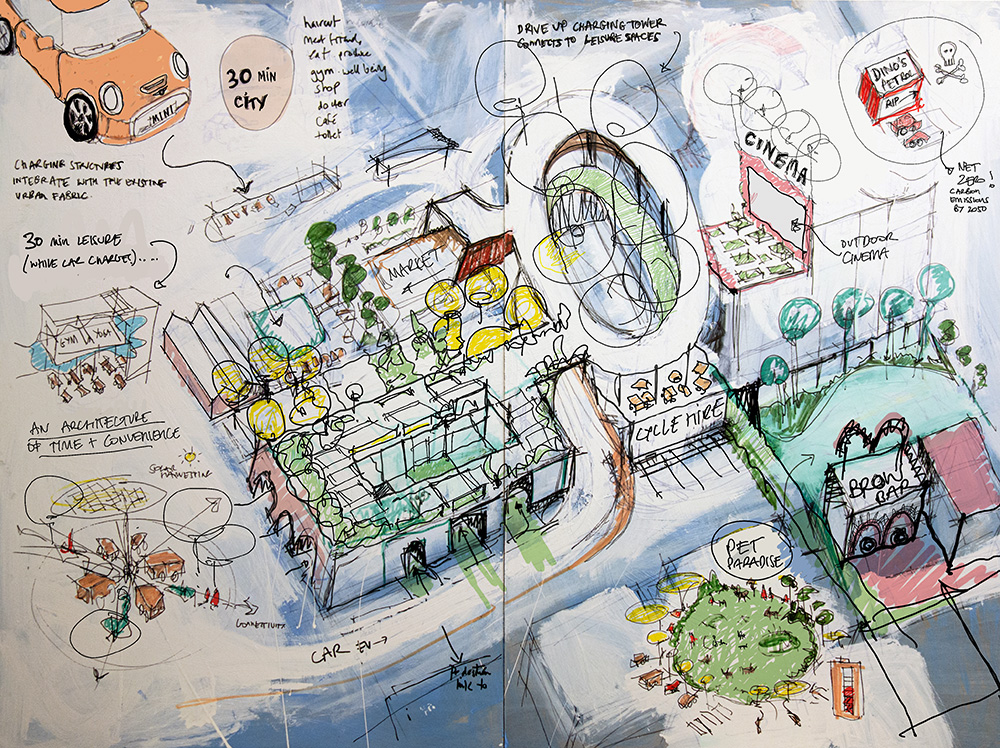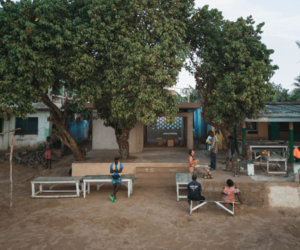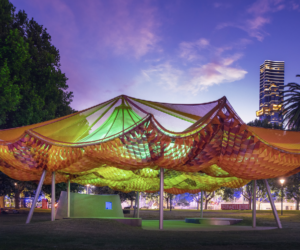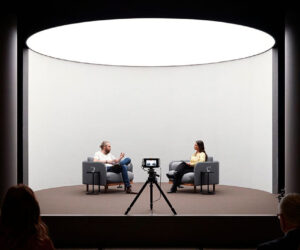INVERT 4.0 Studio Edwards
THE BRIEF
As renewables become the dominant energy source and electric vehicles the norm, how will our cities adapt?
green magazine and MINI invited architects and RMIT master of architecture students to hypothetically redesign an inner urban precinct to demonstrate how architecture, renewable energy and electric cars could work together to produce smarter outcomes for residents and visitors. We asked: how can the well-being of the community be enhanced?
STUDIO EDWARDS
30 MINUTE CITY
An architecture of time and convenience.
Our drawing titled ‘30 minute city’ imagines how charging stations act as a catalyst for new activities.
Responding to the time required for charging of electric vehicles, the city will adapt to facilitate new activities around the notion of time and convenience. Rather than waiting, the process of charging can be combined with time for walking the dog, shopping fresh produce, visiting the doctor, meeting friends for coffee, beauty, wellbeing, exercise or even watching a film. Giving rise to new ecosystems and fulfilling a broader set of demands than just the charge itself.
Across the site large solar harvesting canopies convert the sun’s energy into electrical charge. Charging bays at ground-floor level are sheltered beneath lightweight solar harvesting canopies for super charging.
Drivers opting for a longer charge would drive up into the multi-level storage bays, where cars can be left to charge for longer periods, enabling users to enjoy time in the city before returning to their fully charged vehicle. Green spaces are dispersed within the built forms, creating rooftop gardens, parks and green paths.



